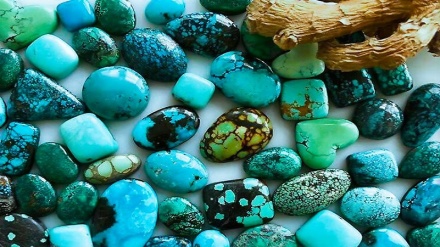Iranian Market (46)
Hello dear listeners and welcome to this week’s episode of the series the Iranian Market in which we’re going to discuss the art of Qalamzani or the metal artwork in Iran. This handicraft has many enthusiasts inside the country and it is exported to different parts of the world. Keep us company until the end of the program.
Handicrafts are the cultural exports of the Islamic Republic of Iran.
The Islamic Republic owns one of the most variegated collections of handicrafts in the world including 24 categories and about 370 subcategories. Iran’s major handicrafts, that are exported to different countries around the world and we have discussed some of them during our previous programs, include carpet weaving, pottery and ceramic, tile work, enameling, wooden art, textiles, glasswork, felting, metal etching, engraving, straw matting and many others.
Given its rich culture, ancient civilization and geographical location, Iran plays a key role in the world of arts and handicrafts.
Every corner of this vast country is specialized in certain handicrafts. Handicrafts are in fact one of Iran’s tourist attractions. Tourists visiting Iran face a wide variety of options to take with them to their homeland as souvenirs. In major tourist cities of Isfahan, Shiraz, Yazd and Tabriz, foreign tourists are attracted to the appealing artistic works.
According to official statistics, Iran earned $281 million from the export of handicrafts – excluding carpets - in the Iranian calendar year of 1396 (21 March 2017 – 20 March 2018).
One of the precious Iranian handicrafts is the work of Qalamzani.
Qalamzani is an Iranian ancient metalwork art. It consists of engraving with chisel and hammer on different metals such as gold, silver, copper, bronze, and some alloys. It dates back to five to seven thousand years ago; though its documented history goes back to the Sassanid era, about 700 A.D.
In Achaemenid era, the golden age of metalwork, different methods of metalwork developed so greatly that highly affected the works of next centuries and millennia.
Qalamzani was chiefly flourished in Seljuk and Safavid eras. One of the most special metalworks in Seljuk period was inlaying silver and red copper on bronze.
During the Safavid era, one of the specific designs was the inscriptions of the names of Ahl al-Bayt (Progeny of the Prophet of Islam). Utensils made of copper and bronze as well as steel doors and windows for religious and sacred places were common in that era. The designs mostly included winged animals with lion heads, plants and birds, royal parties, fights and hunting, and musical instruments engraved on gold and silver. Safavid metalwork was produced so elaborately that gained the world reputation, and it was exported to different parts of the world at that time.
Although there are different methods for Qalamzani, all of them have the same process of production.
To engrave, the craftsman covers the back side of the work with tar to prevent making much noise or puncture. Then, the favorite design is copied on the surface of the work. When the design is engraved, the craftsman detaches the tar by heating, and then covers the grooves and the chiseled area with charcoal powder. The designs usually include the geometric, natural, human and animal shapes and miniature. After cleaning and polishing the black lines, the design appears on the surface of the work.
Qalamzani is usually done on plates, trays, vases, etc. Different tools are used for Qalamzani such as various chisels, hammer, anvil, caliper, bending machine and so on.
Two main styles of Qalamzani in Iran include Tabrizi and Isfahani styles. In the Tabrizi style, the pressure for moving the chisel and engraving is done by pressure of the wrist, while in the Isfahani style it is done by hammering.
There are some workshops in Isfahan as the main center of Qalamzani.
Qalamzani (artwork on different metals) is a combination of art, technique, and industry. Due to diligent efforts of Iranian maestros, this beautiful art has flourished during the recent years. Fortunately the youth are becoming more interested in this old art.
Handicrafts have become increasingly popular in the global market.
Major export destinations for Iranian handicrafts are Europe, Japan, Canada, Australia and Persian Gulf littoral states.
There are over 295 types of handicrafts produced in Iran, each having its own customers and usage. This has placed Iran on the third rank in the world in terms of producing handicrafts. China and India stand first and second respectively.
AE/SS


